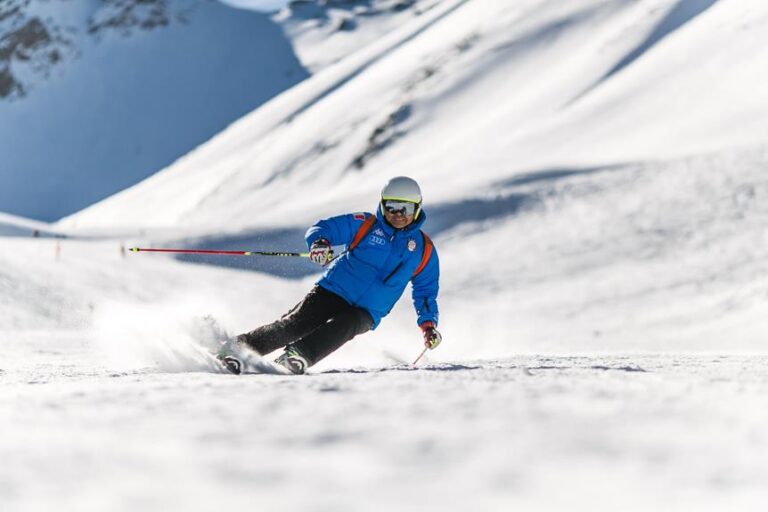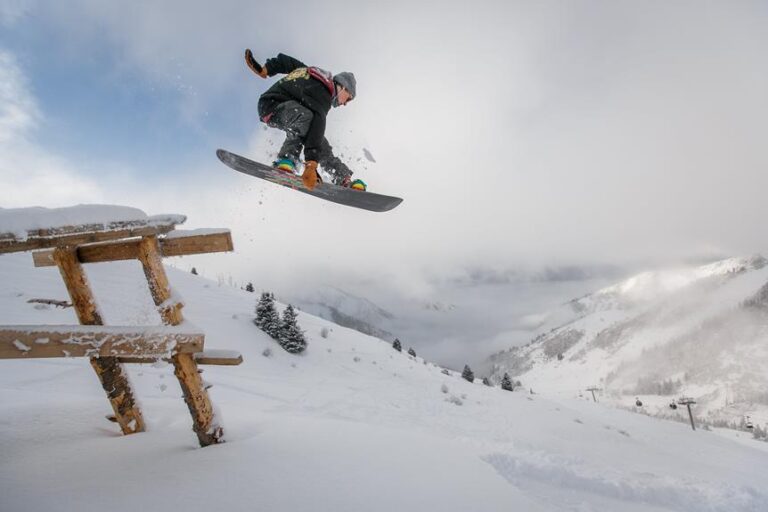Ski Boots Vs Snowboard Boots – Expert’s Choice!
Are you ready to hit the slopes but not sure which boots to strap on? Well, deciding between ski boots and snowboard boots is like choosing between a sleek sports car and a nimble off-road vehicle. Both have their own unique characteristics and it all comes down to what kind of ride you're looking for.
So, let's dive into the world of ski boots and snowboard boots, exploring their differences and helping you make an informed decision that will have you shredding the mountain in style.
Flex
When it comes to boots for skiing and snowboarding, the flex is a crucial factor to consider.
Ski boots for snowboarding and snowboard boots have different flex ratings. Generally, snowboard boots have greater flex compared to ski boots. This means that snowboard boots are stiffer, providing more resistance when bending the ankle.
On the other hand, ski boots come in various degrees of flex, ranging from very soft to most rigid. Skiers can choose the flex rating based on their skill level and preference. Beginners often prefer softer boots with lower flex ratings, as they offer more forgiveness and ease of movement. Expert skiers, on the other hand, opt for more rigid boots for better performance and control.
Snowboard boots are made of a softer synthetic fabric, which provides greater flexibility and comfort, particularly when walking.
The flex rating of ski and snowboard boots is crucial in determining the stiffness, responsiveness, and support. It directly impacts the overall performance on the slopes, making it an important consideration when choosing boots for skiing or snowboarding.
Outsole
Now let's shift our focus to the outsole, an essential component of boots for skiing and snowboarding. When it comes to ski boots, their outsoles typically have a chunky and stiff design that easily clicks into ski bindings, creating a secure attachment. This design ensures that skiers have a firm connection to their skis, providing better control and performance on the slopes. Additionally, all alpine ski boots are universally compatible with ski bindings, making it convenient for skiers to use any ski boot with any binding.
However, the stiff construction of ski boot outsoles can make walking a bit challenging. While they do offer traction on slick surfaces, their rigid nature can restrict natural movement and flexibility.
On the other hand, snowboard boot outsoles resemble those of winter hiking boots. They provide cushioning underfoot and secure strapping into snowboard bindings, giving snowboarders the necessary support for their activities. These outsoles are designed to be more comfortable for walking, allowing snowboarders to move freely off the slopes.
Fastenings
To secure your feet and ankles in ski boots and snowboard boots, fastenings are utilized. Ski boots typically have four adjustable metal buckles and a velcro strap, providing a secure and customizable fit. These buckles fasten over your foot and around your ankle, ensuring stability and control while skiing. It's important to tighten the fastenings in ski boots to prevent foot movement and ensure optimal comfort and performance. You may need to make adjustments between runs to find the perfect fit.
On the other hand, snowboard boots are fastened using laces or a dial lace system. These fastenings allow for a snug and adjustable fit, enhancing comfort and support. The fastenings in snowboard boots are crucial to establish a secure connection to the snowboard bindings. This connection is essential for stability and responsiveness during snowboarding.
Whether you choose ski boots or snowboard boots, the fastenings play a vital role in keeping your feet and ankles secure. Ski boots rely on adjustable metal buckles and a velcro strap, while snowboard boots utilize laces or a dial lace system. Each type of fastening provides a different level of customization and support, allowing you to find the perfect fit for your preferred winter sport.
Comfort and Walking
For optimal comfort and ease of movement, it's important to consider the design of the boots when it comes to walking and overall comfort. When comparing ski boots and snowboard boots in terms of comfort and walking, there are some key differences to consider:
- Ski boots tend to be stiffer and less flexible, which can make walking more challenging and less comfortable. On the other hand, snowboard boots are designed to be more flexible, allowing for a more natural walking motion.
- Snowboard boots often have more padding and cushioning, making them more comfortable to wear for extended periods of time. Ski boots, on the other hand, may feel more rigid and less forgiving.
- Ski boots come in a range of stiffness options, allowing you to choose a boot that suits your specific needs and preferences. Snowboard boots also come in different flex ratings, providing options for different riding styles and terrain.
- Many snowboard boots are designed with features like heat-moldable liners and adjustable lacing systems, which can help improve comfort and provide a better fit. Ski boots may offer similar features, but they aren't as common.
Durability
Are ski boots or snowboard boots more durable?
When it comes to durability, ski boots have the upper hand. This is mainly due to their construction, as ski boots are made with a hard plastic shell that provides stiffness and durability. In fact, ski boots can last up to 10 years or 200 skier days, often outlasting snowboard boots.
On the other hand, snowboard boots have a shorter lifespan, typically lasting up to 70 ski days, making them less durable compared to ski boots.
It's important to note that proper storage is crucial for ski boots to prevent damage, especially to the buckles. While the boot shell of ski boots tends to be more durable, the liners may need replacement before the boots themselves due to wear and tear.
Frequently Asked Questions
What's the Difference Between Snow Boots and Ski Boots?
When it comes to snow boots and ski boots, the main difference lies in their fit and flex. Ski boots are designed for optimal performance on the slopes, while snowboard boots prioritize flexibility and lacing for a comfortable ride.
Can You Wear Snowboard Boots for Walking?
Yes, you can wear snowboard boots for walking. They are designed for walking comfort with features like cushioned soles and ankle support. They are also durable and provide good traction on snow and ice.
Can I Use Any Boots to Snowboard?
Yes, you can use any boots to snowboard, but using specialized snowboard boots has advantages. They are designed for the specific movements and needs of snowboarding, providing better performance and comfort. Using ski boots for snowboarding may impact your balance and control. To ensure the best snowboarding experience, it's important to find the right boots for your skill level and style of riding.
Is There a Difference Between Snow Boots and Snowboard Boots?
Yes, there is a difference between snow boots and snowboard boots. Snowboard boots are more comfortable and easier to walk in, while ski boots are stiffer and more durable. Choose the right boots based on your activity and ensure proper fit for skiing or snowboarding. Remember to maintain and care for your boots.
Conclusion
In conclusion, when deciding between ski boots and snowboard boots, it ultimately comes down to personal preference and the specific demands of your activity.
Ski boots offer a range of flexibility options and have adjustable buckles for fastening, but can be less comfortable and difficult to walk in.
Snowboard boots, on the other hand, are generally more comfortable and easier to walk in, with options for laces or a dial lace system.
Consider your needs and preferences to make the right choice for you.





